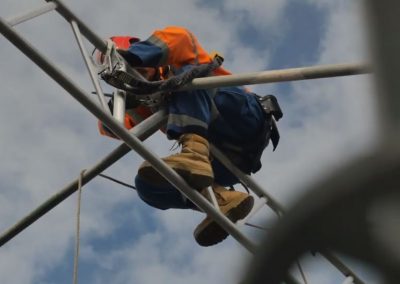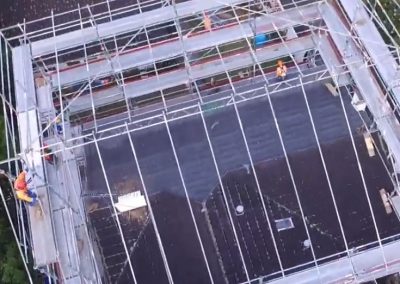Welcome to our March newsletter.
This month, Leading Hand Jed Klaassen and I, was fortunate enough to attend the annual Layher User Group Meeting (LUGM), in Wellington, at the Lower Hutt Event Centre.
The day started off bright and early boarding a plane down to Wellywood. This was a day to discuss and witness new, exciting innovations, various technical topics, training developments, and the latest updates, brought to us directly by Layher Germany.
My highlight would have been the introduction of Layhers’ new Bridging System, which is capable of spanning a walkway of around 25m,…
However, Layher also treated us to a dinner at the München Food Hall and Bier Haus, consisting of pork knuckles and beer, so the bridging system came in at a close second.
South Pacific Scaffolding has been using the worlds most trusted scaffolding system for over 15 years. German engineered and manufactured, you can be sure that your footing is safe with Layher.
Cheers,
Jarrod Radcliffe
General Manager
100 DAY RENOVATION
Our crew is quite used to having all eyes on them at times, the only difference this project had, was that it was broadcast on National television!
We had a small team, consisting of Solomon Merigildo, Ryan Hughes, Tukaha Tainui, Junior Merigildo, Wol Petto-Port, Arnel Ruelos, George Uerata, and Genevieve Stevens, involved with the TV show, 100 Day Renovation, currently screening on Prime, at 6 pm on Saturday evenings.
This was a fast-moving project, which took place in a residential setting, existing 1930’s style bach-come-family home, in Manly, Whangaparaoa.
This project included scaffolding and encapsulation to the perimeter of the building and a roof structure to go over the new extension of the house. This was a project where timing was everything and given the structure of the show, our team was required to work to a strict schedule.
A mammoth effort put in by all involved.
SAFETY MESSAGE FROM MANAGEMENT
As the end of Daylight-Savings rolls around, and the cooler weather begins to set in, South Pacific Scaffolding would like to remind our clients, and friends alike to please stay safe over the second quarter of the year.
A few pointers are:
1) Please conduct regular checks on your workers PPE gear to ensure its integrity has not been compromised due to wear. It’s important to provide your workers with the appropriate PPE relative to the type of work being carried out. This can include helmets, ear protection, safety goggles, knee pads, and hi-vis jackets. If they become worn or unfit for purpose, they need to be replaced immediately.
2) When erecting scaffolding, there should be no shortcuts or improvisations. It should be built on stable ground with solid footing to eradicate the risk of it collapsing. Be sure to maintain and repair any damage or inconsistencies of the structure, as well as ensuring that all workers using the scaffolding to have an adequate level of scaffolding safety training.
3) Construction sites are full of potential dangers, not just for workers but for the public too. It’s important to highlight any hazards with signs and an adequate hazard board, warning everyone nearby to take precautions. Signs are a cost-effective way of reducing accidents, which could indicate dangers such as falling objects, turning large vehicles or presence of gas/chemicals.
4) Construction workers rely on their tools to work efficiently and get jobs done. If their tools are unsafe or broken, there are higher risks of serious accidents including the loss of limbs. Equipment should regularly be inspected to ensure there are no equipment malfunctions or defects. It is both the responsibility of the worker and the employer to highlight issues with defective equipment.
5) Communication is King!
Communication is a major factor in keeping workers safe. The workers should communicate with each other and with any involved third party if they identify potential risks. Those working onsite should be aware of existing potential hazards but also have a conscious awareness of other dangers.
Workers should be regularly asked about what they think could make their job safer and have the opportunity to report any accidents or near-misses.








